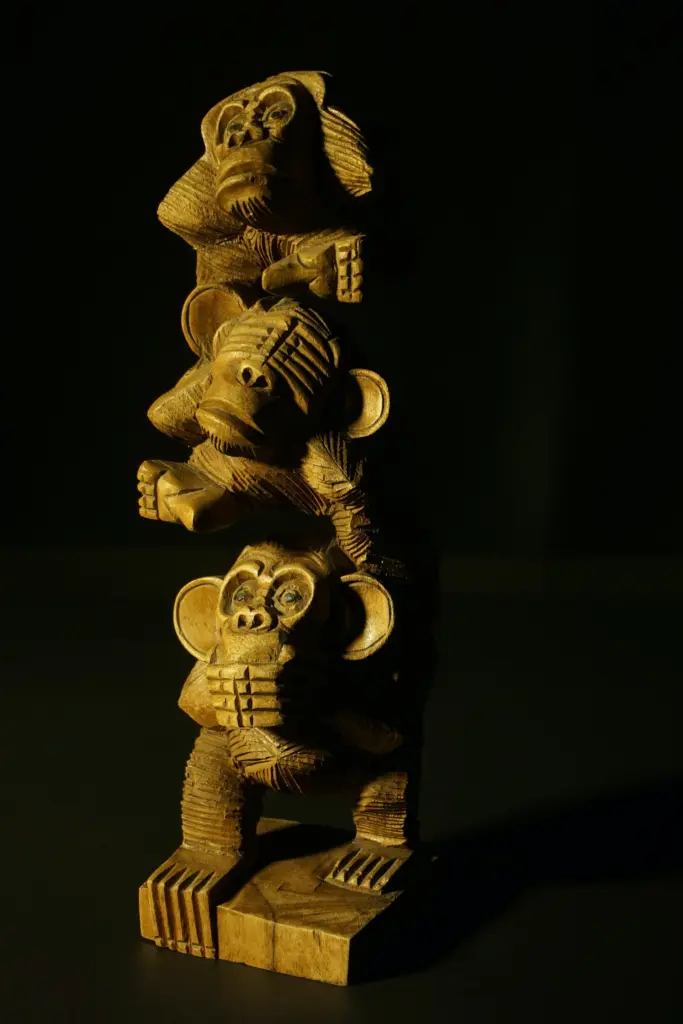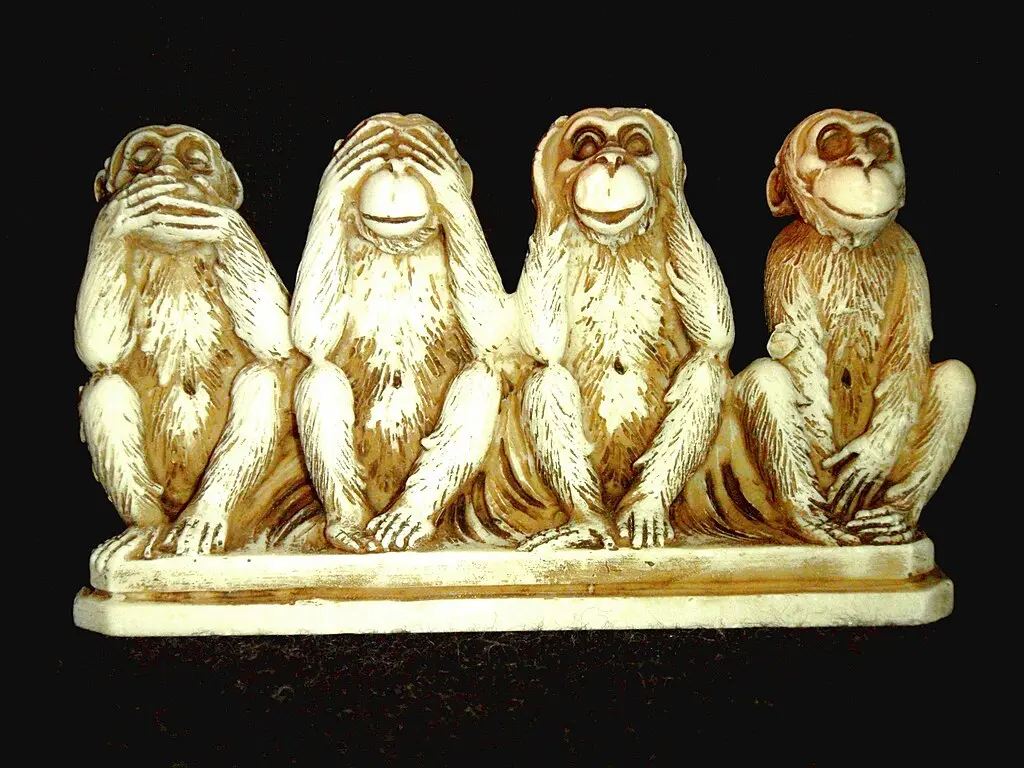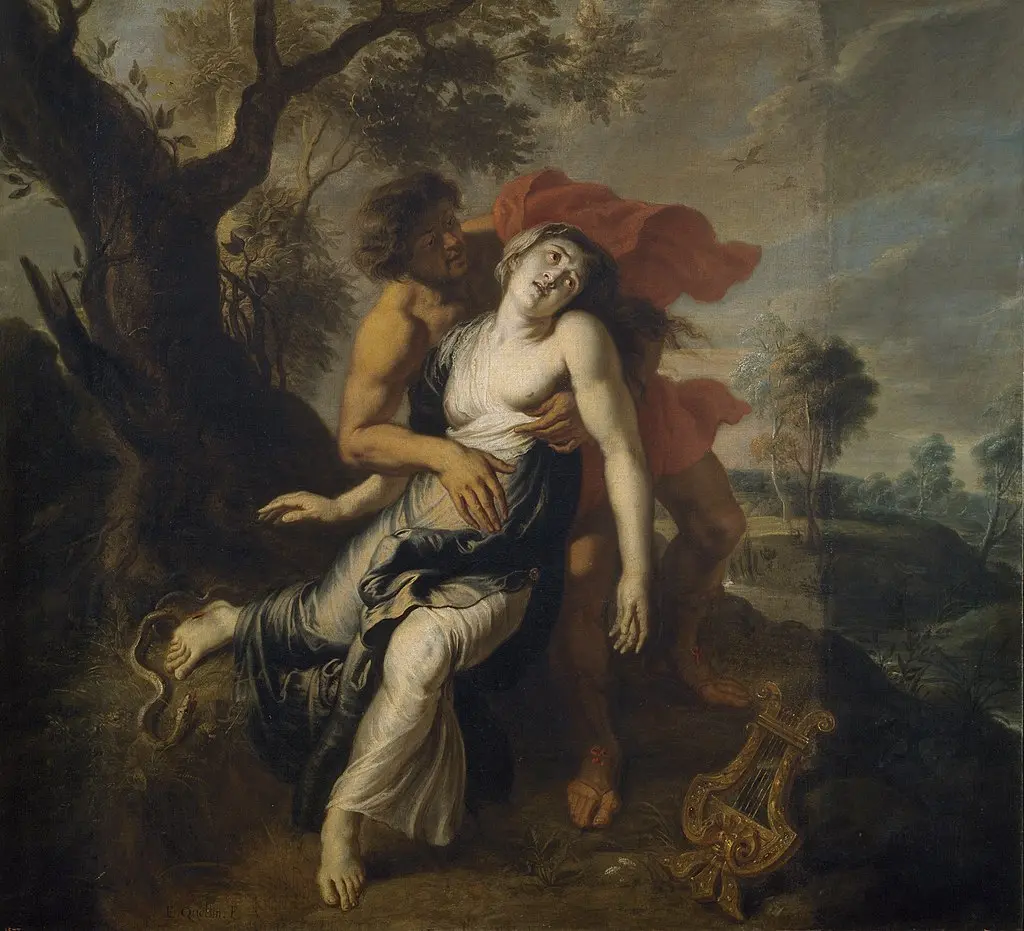The Three Wise Monkeys.
This iconic trio, each covering their eyes, ears, and mouth, is not just a familiar sight in art but a vessel of profound wisdom, encapsulating an ancient maxim: “See no evil, hear no evil, speak no evil.”
This seemingly simple phrase belies a depth of understanding about human nature.
They are a reflection of humanity’s ongoing quest to understand and articulate the complexities of ethical living.
In this comprehensive exploration, we’ll journey through the historical origins of the Three Wise Monkeys, analyze their individual and collective significance, and unravel the philosophical implications embedded within this timeless symbol!
Table of Contents
Toggle
Historical Origins
The story of the Three Wise Monkeys begins in Japan. The earliest known depiction of these symbolic primates is found in the sacred Toshogu Shrine in Nikko, a masterpiece of 17th-century wood carving.
However, the roots of the monkeys’ message dig deeper, linked to older Buddhist traditions that spread from China and India, carrying with them a confluence of philosophical ideas.
These monkeys are believed to have been inspired by the Buddhist principle of not dwelling on evil thoughts. This principle is a reflection of the Buddhist teaching of the Three Poisons: greed, anger, and ignorance, which are seen as the source of all suffering.
The monkeys serve as a compelling embodiment of this teaching, their gestures a symbolic refusal to engage with moral corruption.
In Japan, the monkeys also became associated with the Shinto deity Koshin, a guardian against evil spirits. This melding of Japanese Buddhist and Shinto beliefs (Shungendo) exemplifies Japan’s unique syncretic religious culture, where multiple faiths often coexist and intermingle, creating rich, multi-layered traditions.

The Three Wise Monkeys
1. Mizaru - See No Evil
The first of the monkeys, “See no evil,” is represented by Mizaru, the monkey who covers his eyes.
Mizaru, derived from the Japanese “mi” (miru, to see) and “saru” (monkey), is a linguistic play on words, combining the action of seeing with the negative form “zaru”, indicating “not”.
Mizaru symbolizes the choice to avoid witnessing immorality.
This concept is not just about physical sight but encompasses a broader philosophical stance. By choosing not to see evil, Mizaru embodies the notion of guarding one’s mind and moral integrity against corruption. This idea was particularly significant in Japanese culture, where maintaining moral purity was highly valued.
The moral implications of Mizaru’s gesture does raise universal questions about the nature of evil and our response to it. It challenges us to consider the balance between being aware of wrongdoings and the choice to ignore them, the idea of willful ignorance versus moral discretion.
2. Kikazaru - Hear No Evil
Kikazaru, with his hands covering his ears, represents a deliberate choice to shut out malicious speech.
The name Kikazaru, like Mizaru, plays on the Japanese words “kika” (kiku, to hear) and “saru” (monkey), forming a phrase that means “not hear monkey” when combined with the negative form “zaru”.
What we hear can influence our thoughts, beliefs, and actions. Kikazaru symbolizes the wisdom in being selective about what we allow into our minds through our ears.
By embodying the principle of “Hear no evil,” Kikazaru reminds us of the importance of discernment in what we choose to listen to.
The symbolic act of Kikazaru is not just about ignoring evil speech but also about the broader implication of not being a part of malicious conversations. It is a reminder of the power of words and the responsibility that comes with this power.

3. Iwazaru - Speak No Evil
Iwazaru, depicted with his hands covering his mouth, symbolizes the conscious choice to abstain from malevolent speech, to “Speak no evil“. This action is deeply embedded in the notion of self-governance over one’s words.
The name Iwazaru, following the pattern of the previous monkeys, combines “iwa” (iu, to speak) with “saru” (monkey), thus translating to “not speak monkey.”
In various cultural contexts, the power of speech is recognized as a potent force, capable of both building and destroying. Iwazaru’s gesture is a call to use words thoughtfully, to avoid gossip, slander and falsehoods, and to speak in ways that contribute positively to the well-being of others.
In Buddhist philosophy, Iwazaru’s principle is closely aligned with right speech, which is part of the Noble Eightfold Path.

The Fourth Monkey
4. Sezaru - Do No Evil
Sezaru, who embodies the principle of “Do no evil.” This addition echoes the fuller context of the philosophy they represent, aligning closely with teachings found in the Analects of Confucius.
Often depicted crossing its arms or covering its genitals, Sezaru’s gesture is a powerful symbol of restraint and ethical action. This representation reinforces the importance of not just refraining from evil in thought, speech, and sight, but also in deed, completing the moral directive embodied by the monkeys.
The inclusion of Sezaru extends the maxim into a comprehensive ethical guideline: to avoid engaging in evil actions. It reflects a broader, more active approach to morality, emphasizing that one’s conduct and choices are integral to living a virtuous life.
Thus, the narrative of the Wise Monkeys, enriched by Sezaru, transcends its origins to offer a timeless and universal message: a call to consciously choose actions that uphold and promote moral integrity, contributing positively to the world we live in.
Conclusion
The enduring legacy of the Three Wise Monkeys lies in their simple yet profound message – an invitation to conscious awareness and discretion in our thoughts, words, and deeds.
In a way, the Three Wise Monkeys serve as a mirror, reflecting our ongoing struggle and effort to live morally upright lives in a complex and often challenging world.
As we reflect on the teachings of the Three Wise Monkeys, we can surmise that wisdom is not just found in what we avoid, but also in what we actively embrace and practice.
Their message is a call to each of us to strive towards a life of discernment, responsibility, and compassion, using our senses and abilities not just to navigate the world, but to make it a better place.













